Do you have a question about the Hitachi RAS-13C8M and is the answer not in the manual?
Specifies the Hitachi split type air conditioner models: RAS-13C8M/RAC-13C8.
Crucial safety measures and warnings for the installation process of the unit.
Safety advice for moving or performing maintenance on the air conditioner.
Essential safety rules and warnings to follow during operation, including general cautions and specific warnings.
Identifies and describes the functions of the indoor unit's parts, including filter and indicators.
Details the components of the outdoor unit such as drain pipe, connecting cord, and air inlets/outlets.
Provides the model names and their corresponding physical dimensions in mm.
Explains the meaning of the operation lamp, timer lamp, and filter lamp on the indoor unit.
Describes the operation indicator, auto restart switch, and temporary switch functions.
Details the functions of buttons on the remote controller and display indicators.
Important notes on handling and placing the remote controller to ensure proper operation.
Steps to select and start automatic operation based on room temperature.
Defines the conditions for COOL and DEHUMIDIFY functions in automatic mode.
Steps to set up and start the cooling operation using the remote controller.
Guidance on optimal fan speed and temperature settings for cooling.
Steps to select and start the dehumidifying operation using the remote controller.
Explanation of how dehumidifying adjusts room temperature and air emission.
Instructions for using the unit as an air circulator and for drying the interior.
Steps to set up and start the air circulation mode with desired fan speed.
Procedure to activate the forced super cooling mode for rapid cooling.
Methods to cancel the super cooling operation and its effects on other modes.
How to activate the super silent mode for quiet operation.
Methods to cancel the super silent operation and its effects on other modes.
Instructions for adjusting the upward/downward and left/right airflow direction.
Step-by-step guide for replacing batteries in the remote controller.
Procedure to set the current time, day, and month for timer functions.
How to set the timer for the unit to turn on at a designated time.
How to set the timer for the unit to turn off at a designated time.
Steps to set current time and subsequently the turn-off time for the timer.
Procedure to set the turn-on time, ensuring preset temperature is reached.
How to set a combined timer for both turning the unit on and off.
Steps to set the sleep timer for automatic turn-off after a specified duration.
How to combine sleep timer with an ON-timer for heating operations.
Explains how sleep timer controls fan speed and room temperature.
Important notes regarding sleep timer settings and its interaction with other timers.
Guidance on maintaining optimal room temperature for health and energy saving.
Recommendations for room ventilation and effective use of timer functions.
Importance of cleaning air filters and adjusting temperature for specific users like babies.
Impact of internal heat sources on achieving desired room temperature.
Instructions for powering off the unit when not in use for extended periods.
Safety measures during lightning and explanation of the UV-LED function.
Advice on placement to avoid interference from other electrical products.
Step-by-step guide for attaching the air cleansing and deodorizing filters.
Important notes on filter performance, cleaning, and replacement.
Detailed instructions for cleaning the air filter to maintain performance.
Warnings regarding water temperature, drying, and detergent use for filters.
Instructions for cleaning the front panel of the indoor unit and the remote controller.
Steps to prepare the unit for long-term storage, including drying and power disconnection.
Importance of proper earthing and circuit breaker installation for electrical safety.
Explanation of mains lead wire colors and their corresponding terminal connections.
Key points to check periodically for safe and efficient operation.
Checks to perform when the unit does not operate or cool effectively.
Explanation of normal operational sounds and odors, and odor reduction tips.
Guidance on what information to provide when contacting for service or repair.
Statement of compliance with relevant EEC directives for electromagnetic compatibility and electrical safety.
Recommended and maximum/minimum operating temperatures for indoor and outdoor units.
Specifies the Hitachi split type air conditioner models: RAS-13C8M/RAC-13C8.
Crucial safety measures and warnings for the installation process of the unit.
Safety advice for moving or performing maintenance on the air conditioner.
Essential safety rules and warnings to follow during operation, including general cautions and specific warnings.
Identifies and describes the functions of the indoor unit's parts, including filter and indicators.
Details the components of the outdoor unit such as drain pipe, connecting cord, and air inlets/outlets.
Provides the model names and their corresponding physical dimensions in mm.
Explains the meaning of the operation lamp, timer lamp, and filter lamp on the indoor unit.
Describes the operation indicator, auto restart switch, and temporary switch functions.
Details the functions of buttons on the remote controller and display indicators.
Important notes on handling and placing the remote controller to ensure proper operation.
Steps to select and start automatic operation based on room temperature.
Defines the conditions for COOL and DEHUMIDIFY functions in automatic mode.
Steps to set up and start the cooling operation using the remote controller.
Guidance on optimal fan speed and temperature settings for cooling.
Steps to select and start the dehumidifying operation using the remote controller.
Explanation of how dehumidifying adjusts room temperature and air emission.
Instructions for using the unit as an air circulator and for drying the interior.
Steps to set up and start the air circulation mode with desired fan speed.
Procedure to activate the forced super cooling mode for rapid cooling.
Methods to cancel the super cooling operation and its effects on other modes.
How to activate the super silent mode for quiet operation.
Methods to cancel the super silent operation and its effects on other modes.
Instructions for adjusting the upward/downward and left/right airflow direction.
Step-by-step guide for replacing batteries in the remote controller.
Procedure to set the current time, day, and month for timer functions.
How to set the timer for the unit to turn on at a designated time.
How to set the timer for the unit to turn off at a designated time.
Steps to set current time and subsequently the turn-off time for the timer.
Procedure to set the turn-on time, ensuring preset temperature is reached.
How to set a combined timer for both turning the unit on and off.
Steps to set the sleep timer for automatic turn-off after a specified duration.
How to combine sleep timer with an ON-timer for heating operations.
Explains how sleep timer controls fan speed and room temperature.
Important notes regarding sleep timer settings and its interaction with other timers.
Guidance on maintaining optimal room temperature for health and energy saving.
Recommendations for room ventilation and effective use of timer functions.
Importance of cleaning air filters and adjusting temperature for specific users like babies.
Impact of internal heat sources on achieving desired room temperature.
Instructions for powering off the unit when not in use for extended periods.
Safety measures during lightning and explanation of the UV-LED function.
Advice on placement to avoid interference from other electrical products.
Step-by-step guide for attaching the air cleansing and deodorizing filters.
Important notes on filter performance, cleaning, and replacement.
Detailed instructions for cleaning the air filter to maintain performance.
Warnings regarding water temperature, drying, and detergent use for filters.
Instructions for cleaning the front panel of the indoor unit and the remote controller.
Steps to prepare the unit for long-term storage, including drying and power disconnection.
Importance of proper earthing and circuit breaker installation for electrical safety.
Explanation of mains lead wire colors and their corresponding terminal connections.
Key points to check periodically for safe and efficient operation.
Checks to perform when the unit does not operate or cool effectively.
Explanation of normal operational sounds and odors, and odor reduction tips.
Guidance on what information to provide when contacting for service or repair.
Statement of compliance with relevant EEC directives for electromagnetic compatibility and electrical safety.
Recommended and maximum/minimum operating temperatures for indoor and outdoor units.
| Cooling Capacity | 3.5 kW |
|---|---|
| Heating Capacity | 4.0 kW |
| Power Supply | 220-240V, 50Hz |
| Refrigerant | R410A |
| Indoor Unit Weight | 9 kg |
| Type | Split Air Conditioner |


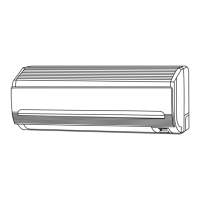
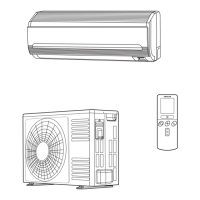
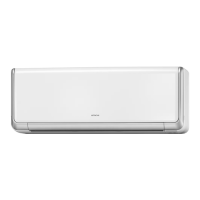

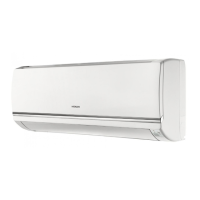
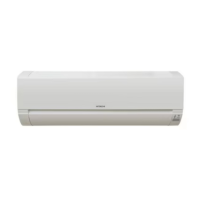
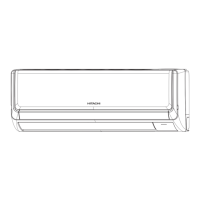
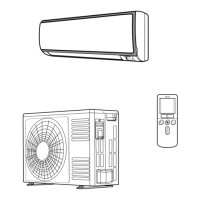
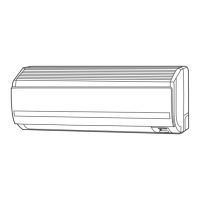
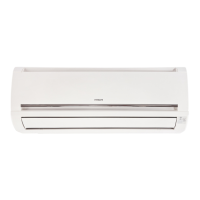
